The bamboo plant is undeniably a thing of great beauty as it’s peaceful to look at and calming to the senses
If you didn’t know already, it has also been associated with serenity and prosperity since ancient times. The perennial bamboo actually belongs to the grass family called Poaceae and the size of the plant varies from one species to another, ranging from giant timbers to small annuals.
Bamboo can be divided into two main categories, namely, runners and clumpers. While clumper bamboo can grow out into a gradually expanding tuft, runners are known to produce shoots several meters away from the parent plant.
The plant evolved around 30-40 million years ago and can grow incredibly fast to up to 19-22 centimeters in a day, growing up to 3.8-5 centimeters in an hour!
It is a versatile woody plant that can be placed anywhere in the house. They can actually purify the air in your living space and look simply beautiful wherever you keep them.
However, there are different kinds of species of bamboo plants, that could be kept at various places in the house such as indoors, in gardens, yards, or on the deck.
And if you want to know which ones are meant for these purposes, then stay tuned for the rest of the guide!
Related Articles
Bamboo 101 – Pros and Cons of Bamboo Flooring
Types of Bamboo for Indoors, Deck, Garden & Yards
-
Clumper Bamboo
As we had mentioned before, clumpers are a popular ornamental variety since they are not an invasive species and stay within their respective territory. The underground stems of the clumpers are known as rhizomes and are pretty different from other non-clumping bamboo or timber types.
Clumping bamboos grow out making a “U” shape instead of spreading out horizontally. The new “culms” sprout next to the parent plant and only grow and spread a few inches in a year.
Clumper bamboo can reach a height ranging anywhere between 8-25 feet. This will depend on the kind of clumper bamboo that is.
Following is an extensive list of all kinds of Clumper bamboo that there are and what use they could be put to.
-
Fargesia Bamboo
The Fargesia species of the clumper bamboo belongs to the category of flowering plants of the grass family. Although the plant is native to China, it can also be found in certain areas of Vietnam and in the eastern regions of the Himalayas.
Some subspecies of the Fargesia bamboo are widely cultivated as ornamental plants. These include the umbrella bamboo and the fountain bamboo.
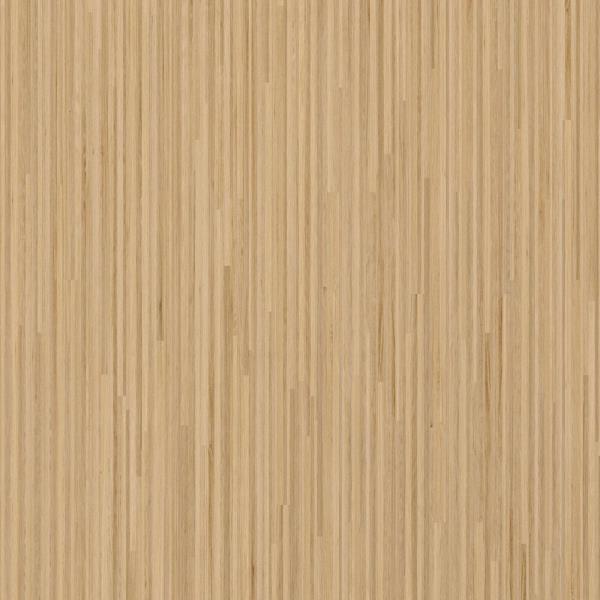
The Fargesia grows mountain clumps of small to medium sizes. These are generally found in the alpine conifer forests of several parts of East Asia.
In Chinese, the Fargesia species and its subspecies are called “Jian Zhu” which stands for “arrow bamboo.”
The scientific name of Fargesia was kept in honor of the French botanist, Pere Paul Guillaume Farges.
The Fargesia bamboos are in fact known as the world’s hardiest bamboo plant. However, they aren’t invasive. These are also the favorite food of the Giant Pandas and the decline in the overall population of Fargesia has had an immense impact on the population of pandas in China.
These can now be found in numerous nurseries worldwide as they are affordable and could be grown in large numbers easily owing to their thick clumping habits.
-
Chilean Bamboo
The Chusquea Culeou or, what is commonly known as the Chilean bamboo, also belongs to the flowering plant section of the Poaceae grass family. It is an evergreen bamboo that is native to South America.
This species of bamboo are tolerant to frost, yet widely cultivated in temperate zones. The Chilean bamboo can be commonly found in southwestern Argentina, the rainforests of Valdivia, and in the humid Chilean forests.
One of the significant and vital aspects of this plant is that it controls and manages the patterns of forest dynamics.
The Chilean bamboo regulates the growth of the other types of trees so that they don’t grow out fast and perish in the cold. This clumper bamboo kind forms sizeable clumps, flourishing in favorable conditions.
These bamboos possess “hair lanceolate” leaves that have a sort of spine on their end. The flowers that bloom on this plant are light brown in color. The flowers can bloom for up to 60 years, and the plant dies once it has released its seeds.
Chilean bamboo has entirely solid stems that make it a significantly versatile source for making various things. In fact, the cane of Chilean bamboo can grow up to a height of 6m and be once used by Aboriginal tribes for making the poles for spears. The stems are also used to make a musical instrument, truth ca.
-
Guadua Bamboo
The Guadua bamboo belongs to the Neotropical genus and is in fact, the largest known variety of Neotropical bamboo on this planet. It is a pretty thorny, clumping bamboo that falls under moderate to large species of bamboo.
The Guadua bamboo serves as a vital part of the diet of native animal life, such as the Amazon rats as well as the Atlantic Bamboo rats.
It is commonly found in Uruguay, Trinidad, and the northern parts of Mexico. The largest and densest concentrations are found in the Orinoco and the Amazon basin. These bamboo trees are generally found at lower altitudes that are lesser than 1,500m. Some species, however, can thrive at altitudes higher than 2500m.
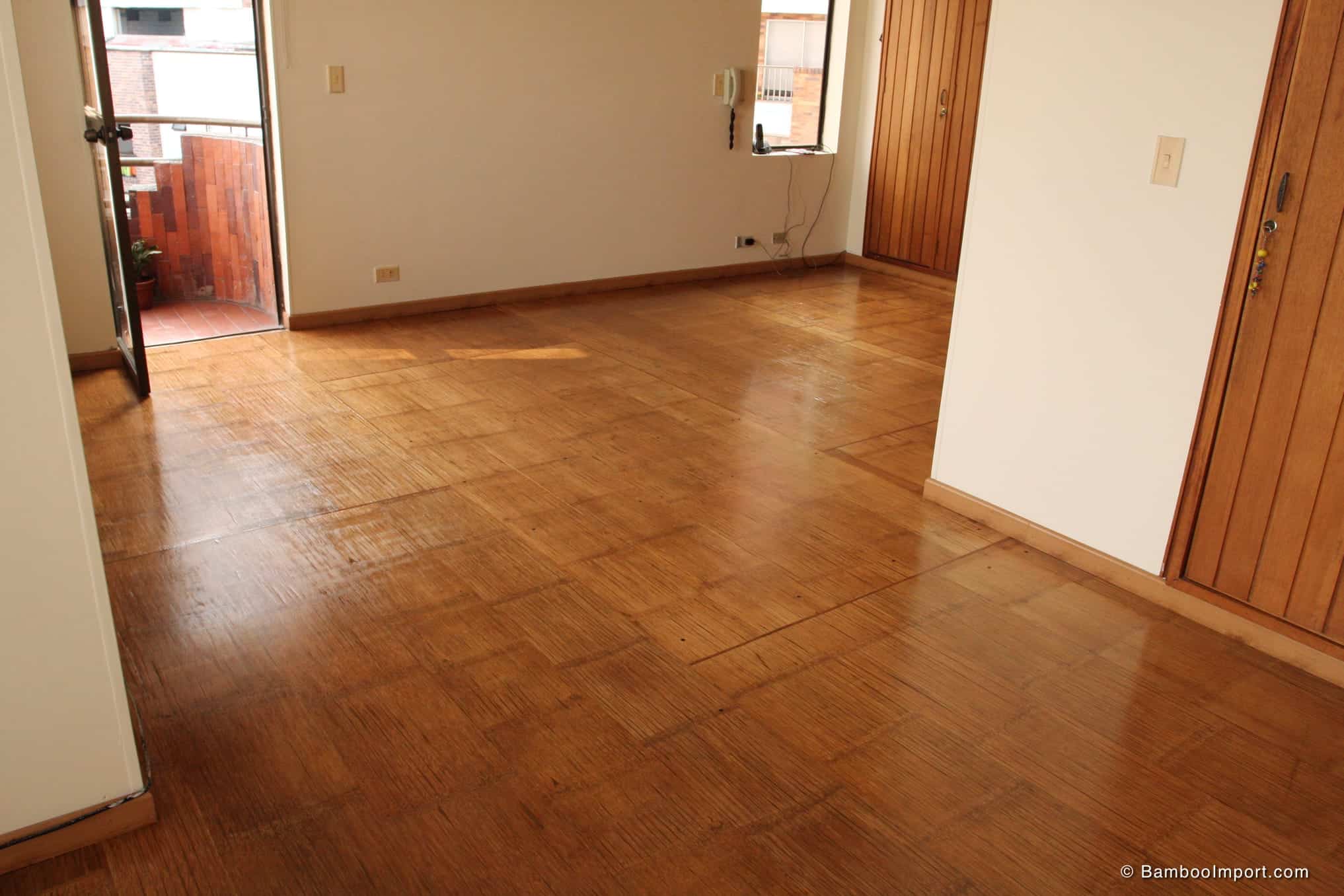
This species of clumping bamboo can be found in almost all kinds of habitats. These could include gallery forests, savannahs, lowland tropical forests, lower-montane forests,s or even in the inter-Andean vegetation found in the valleys.
The Guadua bamboo is considered to be an essential American bamboo as it is majorly used for constructing houses, generally in the coastal region and near river banks in Colombia or Ecuador.
This is because the Guadua bamboo has excellent watershed protection qualities. It is also used for its robust and enduring physical properties for making things like vegetable steel.
Unfortunately, in recent times, the natural concentration of this clumping bamboo has depleted due to the over-exploitation of the plant. And the only way to get that up again is to ensure the sustainable use of the species.
And one of the significant reasons that necessitate the conservation of the species is that the Guadua bamboo is one of those plants that effectively removes more carbon dioxide from the air than several other kinds of tropical trees.
-
G iant Bamboo
The Dendrocalamus Giganteus or the Giant Bamboo, as the name suggests, is a massive tropical and subtropical clumper bamboo type. The tree is native to Southeast Asia and is evidently one of the largest bamboo species of bamboo in the world.
These bamboos have a somewhat grayish-green color, and they grow in close clumps, usually reaching a height of up to 30 meters, i.e., 98 feet.
It grows out quickly and can, in fact, grow up to 40 centimeters a day if provided with favorable conditions. The trees can be found commonly thriving along the banks of the river at higher altitudes.
The Giant Bamboo is generally found in Myanmar, Indonesia, Sri Lanka, Bangladesh, Thailand, and India. The “culms” of these bamboo trees grow out straight and have a kind of powdery or flaky appearance. When these are dried, the color changes into a brownish-green with a smooth surface. Also, the young shoots of the Giant Bamboo have a blackish-purple hue.
One of the major purposes of the Giant Bamboo is that of constructing bridges in India. It is also largely used as a reinforcement of concrete, ladders, scaffolding, or house frames in tiles, walls, or floor coverings. The leaves of the trees are commonly used for thatching.
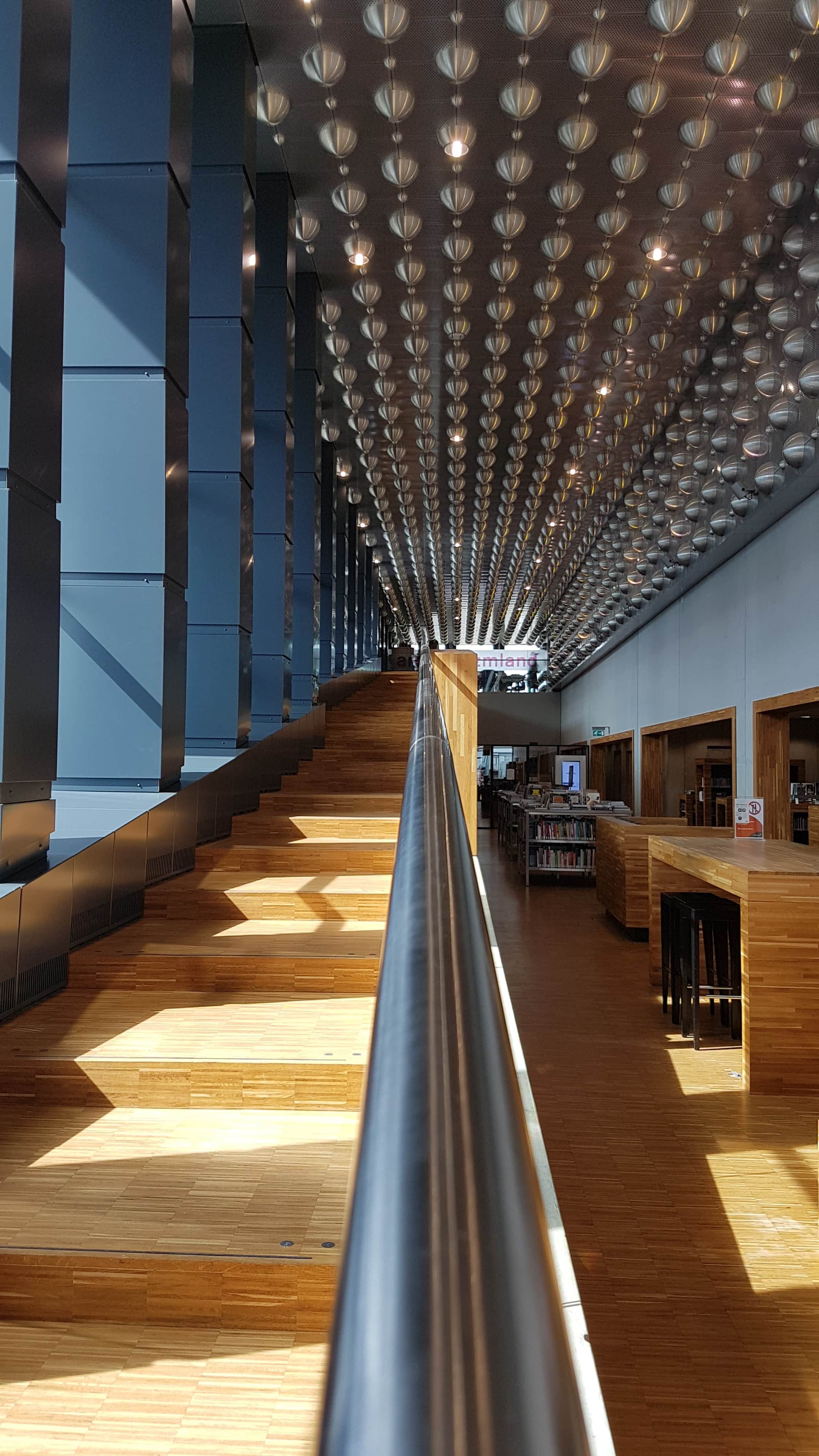
-
Giant Thorny Bamboo
The Bamboosa Bambos is commonly known as the Giant Thorny Bamboo, Spiny Bamboo, or as Indian Thorny Bamboo. This is a clumping bamboo species that are native to Southern Asia. It is extensively found in India, Sri Lanka, Bangladesh, and the Indo-China region.
The plant is also naturalized in Central America, Java, Malaysia, Central America, West Indies, the Philippines, and Maluku.
The Giant Thorny Bamboo is a bright-green, tall, and spiny bamboo species that grows in dense thickets. These thickets consist of a large concentration of heavily branched, closely packed culms. The plant can reach a height of up to 10-35 meters, growing naturally in dry forest zones.
The culms of the plant do not grow straight and have stout, curved spines. These are also bright green in color that turns brownish-green when dried. The young shoots of the plant, however, are deep purple.
The branches spread out from the base of the plant and its aerial roots reach up to a few nodes above.
The length of internodes measures about 15-46 cm in length and about 3.0 to 20 cm in diameter.
The Giant Thorny Bamboo is used in numerous applications, out of which employing their use in making ladders and bridges is a primary one. The leaves of the plant are used for thatching.
The plant is extensively used for medicinal purposes. It contains high levels of silica and is used in several ways in Ayurvedic medications, osteoporosis, and osteoarthritis. The root of the plant is used as an astringent and coolant to treat joint pain. The leaves are antispasmodic, and emmenagogue and are often taken internally to induce menstruation as well as relieve menstrual cramps.
The leaves of the plant can also be taken to strengthen and tone muscle functions and eliminate worms. These also enjoy the reputation of being an aphrodisiac.
The plant is suitably used to make bamboo huts, furniture, and handicraft and is used as biofuel, active charcoal, and for biomass consumption.
-
Oldham’s Bamboo
The Bambusa Oldhamii is a giant timber bamboo that is popularly called Oldham’s Bamboo plant. This large species of bamboo is common and largely grown in the United States and is widely cultivated across the globe.
However, the plant is native to Southern China, especially in Guangdong, Fujian, Guangxi, Zhejiang as well as Hainan, and to the Island of Taiwan. It is commonly cultivated in other places such as New Zealand, Chiapas, Peru, Honduras, and Ryukyu Islands.
The plant is densely foliated and can grow up to 65 feet (20 m) in height in favorable conditions.
The culms of this bamboo plant reach a maximum of 10 cm (4 inches) in diameter. The shoots grow swiftly in warmer months. The branches of this tree are short and have long, beautiful leaves.
The maximum height reached in cultivation depends on the temperature and varies accordingly. The plant can withstand temperatures as low as -7 degrees Celsius (20 degrees Fahrenheit).
In China and Taiwan, the young shoots of Oldham’s Bamboo are considered to be delectables owing to their sweet taste and crisp texture, and it is a favorite amongst locals.
The culms are used for making furniture, but these aren’t really suited for construction.
-
Runner Bamboo
Runner bamboo are categorized and specified solely on the basis of its rooting characteristics. There are primarily two kinds of “rhizome developments” on the runner bamboo. The runner bamboos exhibit monopodial or leptomorph rhizomes which are recognized for their unique, independent underground stems.
Runner bamboo can be found in almost all climatic conditions of the world.
We have discussed the different types of runner bamboo in the next few sections for you to know all about.
-
Dwarf Green Stripe Bamboo
The scientific name for the Dwarf Green Stripe Bamboo is Pleioblastus, and it belongs to the East Asian genus of monopodial bamboo. It is native to Japan and China; and could also be largely found in Korea, Europe, New Zealand, and in the Western Hemisphere.
This species of runner bamboo could be recognized by its chartreuse leaves with green stripes. These look beautiful in the seasons of early summer and spring.
The Dwarf Green Stripe is partly deciduous even during mild winters. This is why it is usually kept closely mowed to the ground in spring by gardeners in order to maintain its beauty.
This hardy runner bamboo is resistant to cold and could survive a temperature down to 0 degrees Fahrenheit. Some species can even grow in the unbelievably cold weather of Minnesota.
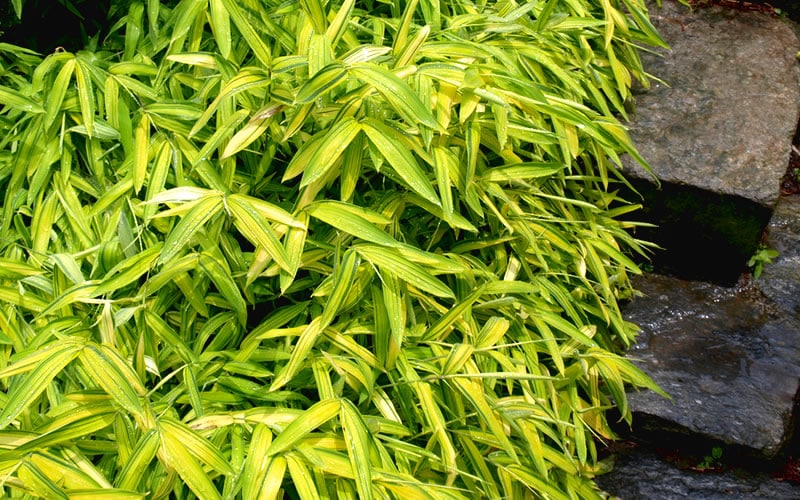
The backs of the bamboo leaves are covered with fine hair that makes the plant highly resistant to the onslaughts of mites and pests.
The plant flourishes underground via rhizomes, running along the surface of the soil and producing tiny plantlets at the nodes.
These can grow into new plants and could be propagated for the purpose. However, gardeners should be careful with the process because if they aren’t removed properly, these could become invasive.
-
Arrow Bamboo
The Pseudosasa Japonica or Japanese Arrow Bamboo gets its name from the hard canes of the bamboo that the Japanese Samurais used to make their arrows.
The Arrow Bamboo is native to Korea and to the Japanese regions such as Honshu, and Kyushu.
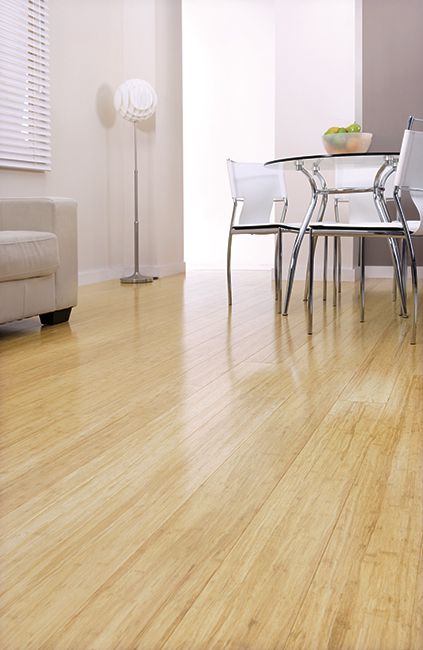
The plant is also grown in 6-10 plant zones in the United States ranging from Florida to Southern Connecticut.
The Arrow Bamboo is a hardy, cold-resistant species that can survive temperatures till 0 degrees Fahrenheit/ -17.7 degrees Celcius.
The plant has palm-like leaves and can grow up to 5-13 inches. It is yellow-brown and could even survive in containers or in salty air.
-
River Cane Bamboo
The Arundinaria Gigantea or the Giant Cane or simply the River Cane Bamboo is native to the South-Central and South-Eastern regions of the United States. These include Oklahoma, Maryland, and Texas. The plant has two main subspecies, namely Arundinaria Gigantea, which is also called the switch cane plant, and SSP.Gigante.
It is a perennial grass type and mainly grows in wet or humid conditions. The cane of the bamboo consists of a rounded, hollow stem that can reach a height ranging anywhere between 10m to 33 feet. The plant uses an expansive network formed of underground rhizomes to flourish.
This runner bamboo has lance-shaped leaves; the inflorescence of the plant has what are known as racemes or panicles. An individual bamboo cane can live up to a decade.
The River Cane bamboo blooms and seeds irregularly depending on the conditions of its environment.
This bamboo could be found growing in several different places as it is pretty common in oak, pine, cottonwood, ash, and cypress forests. Many other plants such as the wax myrtle, creeping blueberry or blue huckleberry use the River Cane bamboo as a support system.
The bamboo canes could be found at floodplains, bogs and savannas, picossins, riparian woods, pine barrens, and even more places. Although they are tolerant of wildlife, they flood rather easily.
The River Cane bamboo has always been popularly used by the Cherokee to make various objects such as basketry or for maintaining canebrakes through periodic cutting and burning.
The concentration of River Cane bamboo had significantly depleted after the European settlements which resulted in a near loss of the traditional art of Cherokee basket-making which is an essential part of the economy of the Cherokees to this day.
The bamboo was also largely used by indigenous people to make things like bows, medicines, walls, flutes, blowguns, knives, candles, fish traps, tobacco pipes, sleeping mats and so much more!
-
Black Bamboo
The scientific name for Black Bamboo is Phyllostachys, and it belongs to the category of Asian bamboo. It is native to Central and Southern China and could also be broadly found in the Himalayan regions as well as the northern Indo-China regions.
Some species of the Black Bamboo have also adapted and flourished in other countries such as America, Australia, and Southern Europe.
The stem or “culm” of the black bamboo develops a noticeable groove known as the “sulcus” that runs along the entire length of each segment or inter-node of the plant.
The Black Bamboo could be identified by this unique groove or sulcus that also helps the plant to grow and spread through underground rhizomes vigorously.

This species of Phyllostachys can grow up to 100 feet in height if provided with favorable conditions. The even larger species of the plant is known as timber bamboo as they are often used for construction and to make furniture.
Several other species of Black Bamboo are often used as ornamental plants even when they are invasive species that require to be grown in restricted areas or containers.
Certain species are also grown indoors as bonsais and are highly admired for their beauty.
One of the smartest things to have been ever invented for comfortable living is bamboo fitted sheets that are made of 100% bamboo cotton. It is softer than the usual cotton and anti-microbial. And if you want to look up some really cool models of the same then do, by all means, stop by at this one-stop-shop destination of luxury organic bamboo bedding and so much more in that department!
-
Hill Cane
The Arundinaria Appalachian or Hill Cane is a woody runner bamboo. It is native to the Appalachian Mountains in the South-Eastern United States.
The plant is comparatively a small member of its genus and grows only to a maximum height of 0.5-1.8 meter, having a diffuse or dense habit.
It is generally found at elevations of 300 to 800 meters, and at times up to 1065 meters.
It is actually one of the only three temperate bamboo species that are native to North America. The plant is commonly found on dry or “mesic” sites, especially on upland slopes, ridges, or bluffs in forests consisting of oak and/or hickory.
The culms of the Hill Cane emerge from subterranean rhizomes. Hill Canes have leptomorph rhizomes that spread horizontally. However, these generally do not reach very far before developing a new culm.
These rhizomes, however, vary a tad bit in morphology than the typical one, in that they possess hollow centers with air canals. Also, the culms have internodes that are smooth and cylindrical, yet, a bit tapering.
The culm-sheaths on the bamboo usually do not shed, but they may eventually fall off late in winter. These “sheaths” generally span 5.5 to 11 cm in length with the oral “setae” measuring as short as 1 to 4.6 mm.
The blades on the culms appear at the highest point of the sheath and are way shorter than the foliage leaves measuring 0.8 to 1.4 cm.
The inflorescence or spikelets are usually of 3 to 5.5 cm long and are typically light reddish-purple in color, with each spikelet containing 5 to 8 florets.
Apart from being common in the Appalachian Mountains, the Hill Cane is also commonly found in the upper Piedmont of the South-Eastern US in the Western Carolinas, South-Eastern Tennessee, North-Eastern Alabama, and Northern Georgia.
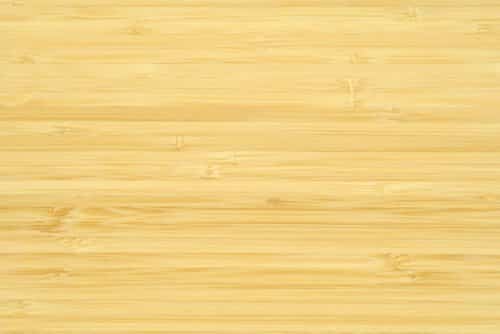
Conclusion
And with that, we have arrived at the very end of this extensive guide on all the different types of bamboo plants you could generally come across or want to plant indoors or around your house. While some could be easily placed at different places in your home, some others would be too massive in structure or evasive in nature to be brought into your residence.
But, a bit of knowledge in the department could help you identify and use the different types of bamboo for all the kinds of purposes that each is suited for!
We hope you liked our endeavor!
See you next time!


